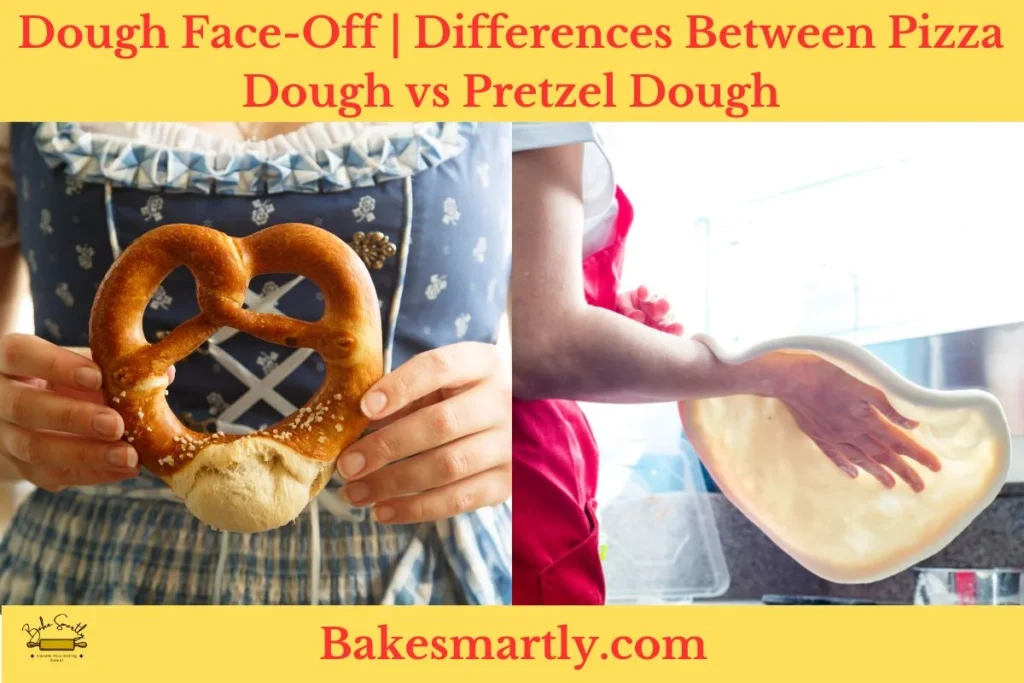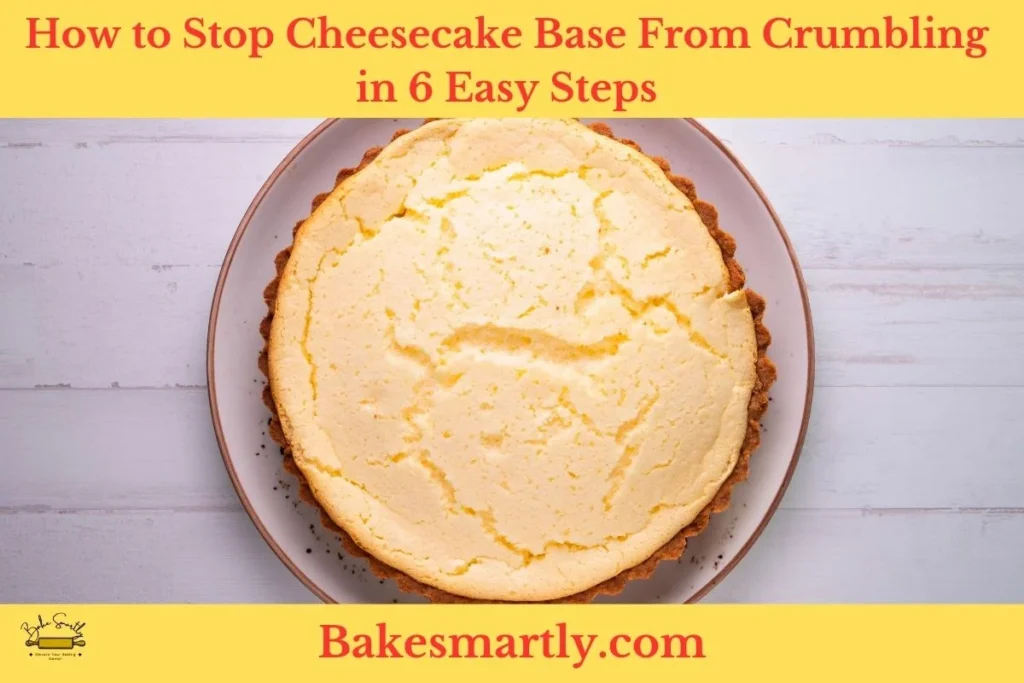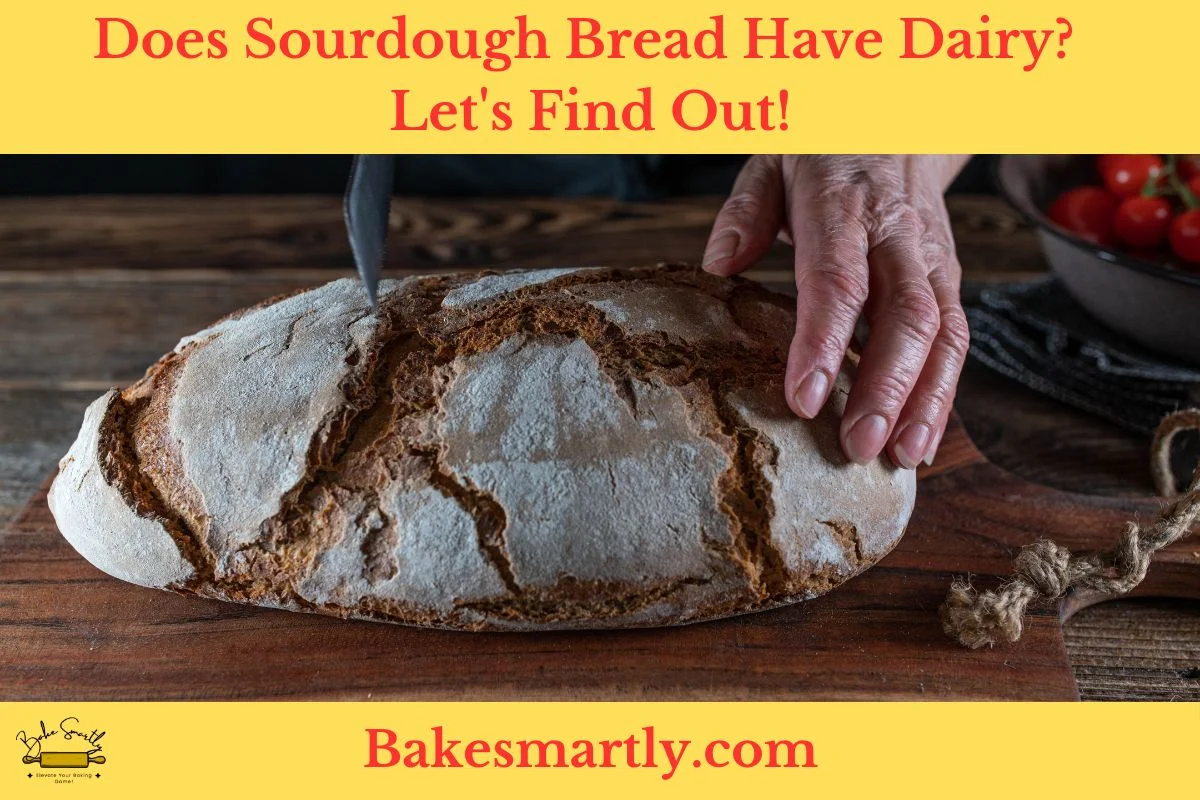
Does Sourdough Bread Have Dairy? Let’s Find Out!
Are you a sourdough bread enthusiast who also happens to be lactose intolerant? Or perhaps you’re just curious about the ingredients in your favorite loaf. Well, you’re not alone. The question of whether sourdough bread contains dairy has confused many bread lovers over the years.
In this article, we will explore the ingredients of sourdough bread, the traditional sourdough-making process, and whether dairy is commonly used in its preparation.
Table of Contents
ToggleIs Sourdough Bread Dairy Free | Answer Revealed
Yes, sourdough bread usually doesn’t have any dairy. The basic stuff you need for sourdough is flour, water, and salt. The leavening agent is a natural sourdough starter, made with a mix of flour and water that captures wild yeast and bacteria from the environment. None of these ingredients include dairy.
But, keep in mind that there might be some variations, so it’s a good idea to look at the specific recipe or ask the baker or manufacturer about the ingredients. If you’re getting sourdough bread from a store, it’s a smart move to check the ingredients on the packaging to make sure it’s dairy-free.
Common Ingredients in Sourdough Bread
Sourdough bread has its own unique taste and chewy texture, and it relies on a few simple yet crucial ingredients. Understanding these components is key to becoming a sourdough baking pro.
Flour
The base of any good sourdough is top-notch flour. While most recipes use all-purpose flour, some enthusiasts like to play around with whole wheat, rye, or other specialty flours to add distinct flavors and textures.
The gluten in the flour gives the bread structure, making it that chewy goodness we love in sourdough.
Water
Though it may seem ordinary, water plays a vital role in sourdough fermentation. It activates the enzymes in the flour, getting the fermentation process going.
The quality of water, whether it’s tap or filtered, can affect the overall taste of the bread. Sourdough fans often stress using clean, chlorine-free water for the best results.
Salt
Beyond adding flavor, salt also acts as a natural preservative in sourdough. It controls the fermentation process, preventing it from happening too quickly.
Plus, salt strengthens the gluten structure, giving the bread a better texture and longer shelf life.
Wild Yeast
The magic of sourdough comes from its natural fermentation. Wild yeast and lactic acid bacteria, found in the environment and on the flour, work together in a symbiotic relationship.
The yeast produces carbon dioxide, making the dough rise, while the bacteria add that signature tangy flavor. This dynamic duo is what makes sourdough stand out from other types of bread.
Dairy (Optional)
Traditionally, some sourdough recipes include dairy like milk or yogurt. However, as dietary preferences change, many modern sourdough variations are dairy-free. For those steering clear of dairy, you can use plant-based alternatives or simply skip the dairy altogether.

How to Make Dairy-Free Sourdough Bread at Home
Making sourdough bread at home is a fantastic way to make sure your bread is dairy-free. Here’s a complete guide to help you become a pro at crafting tasty dairy-free sourdough in the comfort of your kitchen.
Get Your Ingredients Ready
To kick off your dairy-free sourdough adventure, you’ll need the following:
- Flour: Pick a high-quality flour like all-purpose or bread flour to give your sourdough structure.
- Water: Use filtered or tap water at room temperature. If it’s chlorinated, let it sit out for a few hours to get rid of the chlorine.
- Salt: Choose a non-dairy salt, such as sea salt or kosher salt, to add flavor and control fermentation.
- Sourdough Starter: If you don’t have one, make it by mixing equal parts flour and water and letting it ferment until it’s bubbly and active. or ( you can buy it ).
- Dairy-Free Milk: Swap out regular dairy milk with your preferred alternative—nut milk, soy milk, or oat milk all work well and add unique flavors to your sourdough.
Step-by-Step Guide
- Feed Your Sourdough Starter Make sure your sourdough starter is bubbly. If it’s been in the fridge, bring it to room temperature. Feed it equal parts flour and water and let it sit until it doubles in size.
- Mix Your Ingredients In a big mixing bowl, combine 1 cup of sourdough starter, 2 cups of flour, 1 cup of dairy-free milk, and 1 teaspoon of salt. Mix until you have a shaggy dough.
- Knead the Dough Put the dough on a floured surface and knead for about 10 minutes until it’s smooth and elastic. This helps create the gluten structure for that classic sourdough texture.
- First Proofing Put the kneaded dough back in the bowl, cover it with a damp cloth, and let it rise at room temperature for 4-6 hours or until it doubles in size. This lets the wild yeast do its thing.
- Shaping the Dough After it rises, gently shape the dough into a round loaf. Put it in a floured proofing basket or a bowl lined with a kitchen towel, seam side down.
- Second Proofing Let the shaped dough go through a second proofing, covered, for 2-4 hours. This enhances the flavor and texture of your sourdough.
- Preheat Your Oven About 30 minutes before the second proofing is done, preheat your oven to 450°F (232°C). Put a Dutch oven or baking stone in the oven to heat.
- Bake Your Sourdough Carefully move the proofed dough into the preheated Dutch oven or onto the baking stone. Score the top with a sharp knife for controlled expansion. Cover and bake for 20 minutes, then uncover and bake for 20-25 minutes or until golden brown.
- Cooling and Enjoyment Let your dairy-free sourdough cool on a wire rack for at least an hour before slicing. The result? A beautifully crafted, dairy-free sourdough with a crusty exterior and a soft, tangy interior.
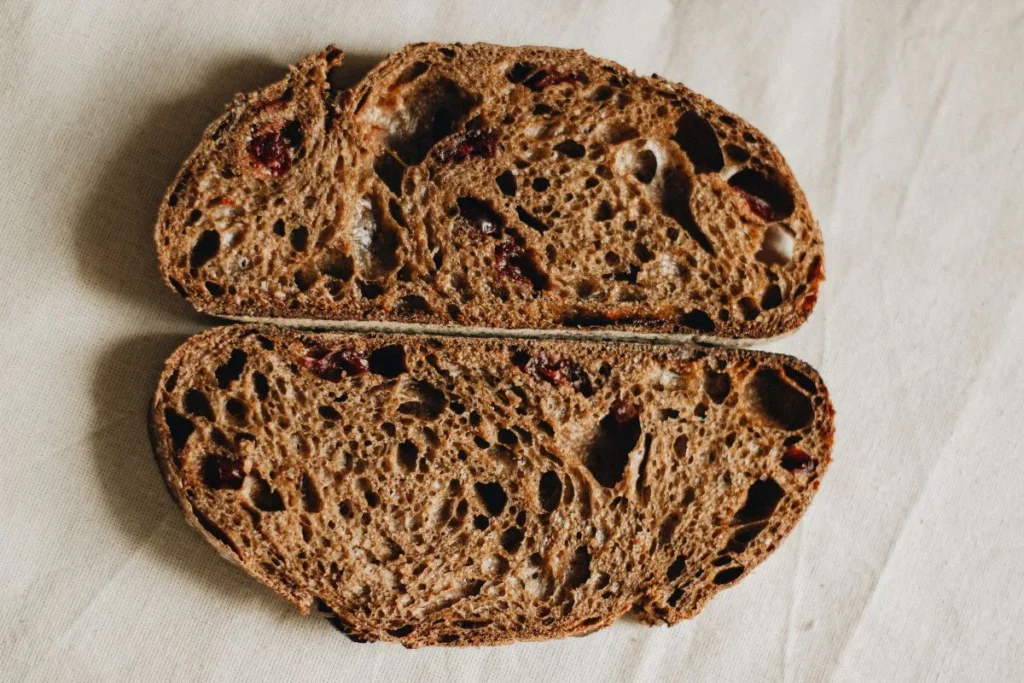
Tips For Buying Dairy-Free Sourdough Bread
Navigating the grocery store for the perfect dairy-free sourdough can be both fun and tricky. To make sure you pick a tasty and informed choice, follow these tips when getting dairy-free sourdough bread.
- Read the Label Carefully: Before tossing any sourdough into your cart, take a moment to go through the label. Look for clear signs that the bread is dairy-free. Some brands plainly say “dairy-free,” or they might use symbols like “DF” to show there’s no dairy.
- Watch Out for Sneaky Dairy Ingredients: While some sourdough brands loudly claim they’re dairy-free, others might hide dairy as additives or flavorings. Go through the ingredient list and check for any mention of milk, butter, whey, or other dairy stuff.
- Look for Certified Dairy-Free Labels: Certifications from trusted organizations can give you confidence about a product being dairy-free. Seek labels like “Certified Vegan” or “Dairy-Free Certified” to be sure the sourdough meets specific standards.
- Explore Local Bakeries and Artisan Brands: Local bakeries and artisan brands often focus on openness and good ingredients. Connect with your local community to find hidden gems offering yummy, dairy-free sourdough options.
- Consider Online Reviews and Recommendations: Tap into the wisdom of online communities. Read reviews and ask for recommendations from people following a dairy-free diet. Their experiences can guide you to brands that consistently deliver on taste and quality.
- Ask Your Local Baker for Help: If you have a favorite local bakery, don’t hesitate to ask the bakers for guidance. They can share insights into their baking methods and help you pick a dairy-free sourdough that suits your taste.
- Check for Cross-Contamination Policies: For those with serious dairy allergies or intolerances, find out about measures to prevent cross-contamination. Some bakeries and brands have special facilities or equipment to reduce the risk of dairy traces in their sourdough.
Is Sourdough Gluten-free?
No, sourdough bread isn’t gluten-free. Traditional sourdough is made from a mix of flour and water, and the fermentation process involves wild yeast and lactic acid bacteria. The fermentation might break down some gluten proteins, but it doesn’t get rid of them completely.
However, some folks with gluten sensitivity or intolerance discover that they can handle sourdough bread better than other kinds. That’s because the fermentation process might lower the gluten and break down certain components that could be problematic for some people.
If you have celiac disease or a serious gluten allergy, it’s important to pick a certified gluten-free sourdough or make your own using gluten-free flour to avoid any potential gluten contamination. Always check product labels or ask the baker about the ingredients to make sure it’s safe for those with gluten-related issues.
Is Sourdough Starter Always Vegan?
The base of the tangy bread we all love, the sourdough starter, is usually vegan-friendly. It’s made with simple ingredients like flour and water, without any animal products. However, there can be variations. Some bakers add things like honey or milk to enhance their starters, which might make them non-vegan.
It’s important to check the ingredients or talk to the baker to make sure the starter follows vegan principles. Luckily, many sourdough enthusiasts stick to vegan practices and create starters that follow a plant-based approach.
Essentially, while the traditional sourdough starter is naturally vegan, specific recipes might include non-vegan elements. This highlights the need for careful examination for those dedicated to a strict vegan lifestyle.
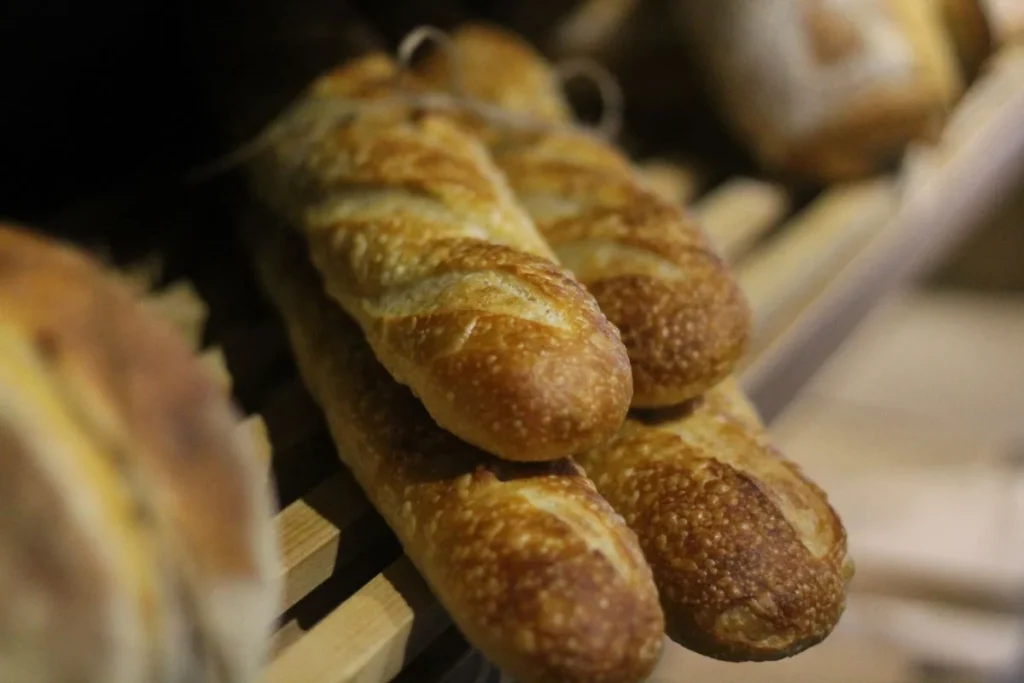
What Type of Bread is Dairy Free?
Many types of bread are naturally dairy-free, as bread typically consists of basic ingredients such as flour, water, yeast, and salt. These ingredients do not contain dairy. However, it’s essential to check the labels, as some commercial bread brands may add dairy or other milk-derived ingredients for flavor, texture, or preservatives.
To ensure that the bread you choose is dairy-free, you can look for labels that explicitly state “dairy-free,” “vegan,” or “free from milk ingredients.” Additionally, checking the ingredient list is crucial, as some bread may contain hidden dairy sources, such as whey, casein, or milk powder.
Popular dairy-free bread options include:
- Sourdough: Traditional sourdough bread is typically made with just flour, water, and salt.
- French bread or baguettes: Basic French bread recipes usually don’t contain dairy.
- Whole grain or whole wheat bread: Many whole grain or whole wheat breads are dairy-free, but it’s essential to verify the ingredients.
- Rye bread: Rye bread made with simple ingredients is often dairy-free.
- Gluten-free bread: Many gluten-free bread options are also dairy-free, but it’s important to check the labels.
Always be cautious and check the ingredient list to ensure the bread meets your dietary preferences and requirements.
Frequently Asked Questions (FAQS)
Does sourdough bread have dairy or eggs?
Sourdough bread typically doesn’t contain dairy or eggs in its traditional recipe. However, it’s essential to check specific brands or recipes, as variations may exist. Always read ingredient labels for accurate information on dairy or egg content in sourdough bread.
Is sourdough bread vegan or not?
Sourdough bread can be vegan, but it depends on the recipe. Traditional sourdough is often vegan-friendly, made with flour, water, and salt. However, some recipes may include dairy or eggs. To ensure vegan compliance, check the ingredients or choose certified vegan sourdough options.
Is sourdough gluten-free?
Sourdough bread is not gluten-free. It is made from a mixture of flour and water, allowing natural fermentation by wild yeast and bacteria. Gluten is a protein found in wheat and related grains, and it’s a crucial component for the structure and texture of sourdough bread.
Does Sourdough Bread Have Dairy | Conclusion
In conclusion, regular sourdough bread doesn’t have any dairy since its basic recipe includes flour, water, sourdough starter, and salt. However, some variations and modern recipes might include dairy ingredients like milk, buttermilk, butter, or cheese.
If you want to make sure your sourdough is dairy-free, folks with dietary restrictions should read labels, talk to bakers, or just make their sourdough at home using a simple dairy-free recipe. Sourdough’s versatility means everyone can enjoy this favorite bread, no matter their dietary preferences or restrictions.
Lindsey Mackenzie
About me
Hi there! I’m Lindsey Mackenzie, the founder of Bake Smartly. Baking has been my passion since childhood, growing up in my father’s bakery. With Bake Smartly, I’m excited to share my love for all things sweet and savory. Join me on this delicious journey as we whip up scrumptious treats and sprinkle joy into every bite!

